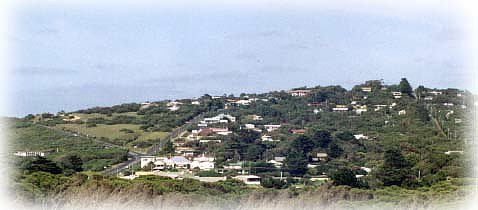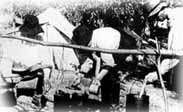
|
|
|
| Our region in the State of Victoria, Australia, can be found some 30 minutes travel time south west of Geelong. This superb location offers bush, beach and surfing. We were formerly known as Swampy Creek, later as Anglesea River, and now just Anglesea. |

|
This
pretty township, enjoys today's status of being the first significant
area where the spectacular Great Ocean Road actually comes alongside the
sea, before it follows the coastline in a westerly direction.

In 1865, travellers with a taste for adventure came on horseback through dense ironbark forests to reach this isolated location, which offered excellent river and ocean fishing plus rock pools rich with crayfish. Nearby was an abundant supply of rabbits and kangaroos. The remote locality soon became a favourite of sporting parties from Geelong, who camped in tents by the side of the river.
The sleepy Hamlet rapidly changed after the Government of the day surveyed land into convenient blocks. The sporting people soon purchased land, and erected holiday cottages.
Cobb
& Co ran a mail coach service in from Geelong for many years on
unformed tracks. Today,
Anglesea has a permanent population of approximately 2000 residents,
which swells Lindsay
Braden - a researcher for The Anglesea and District Historical
Society. Link to the Anglesea & District Historical Society
|